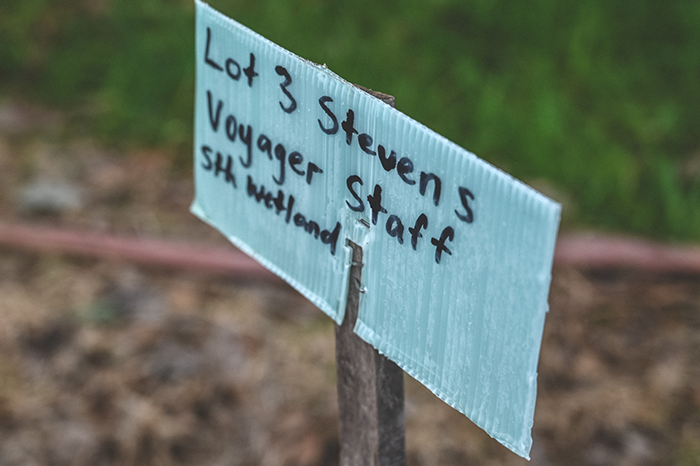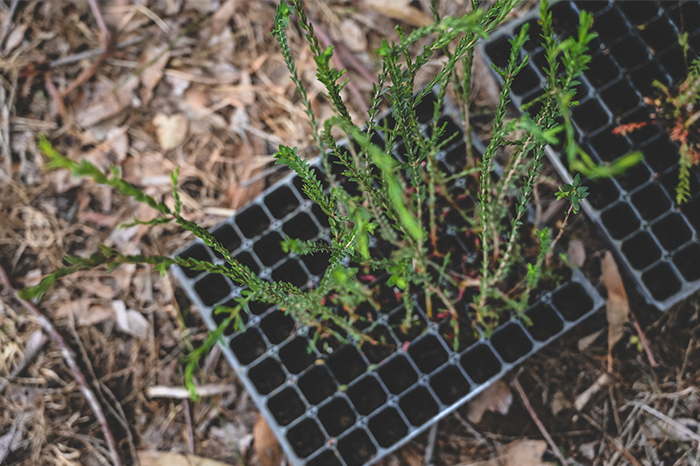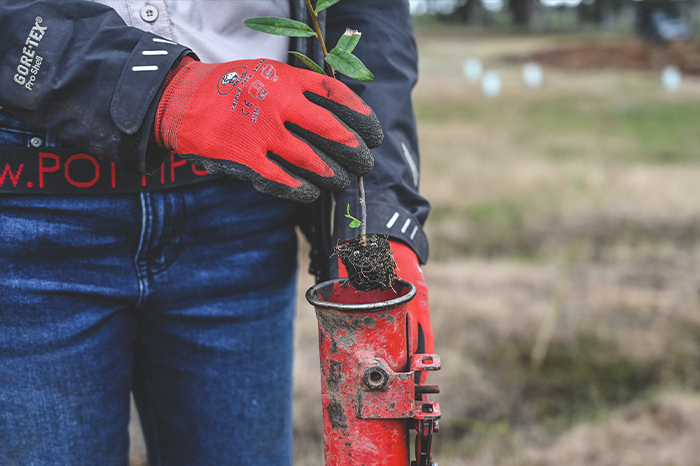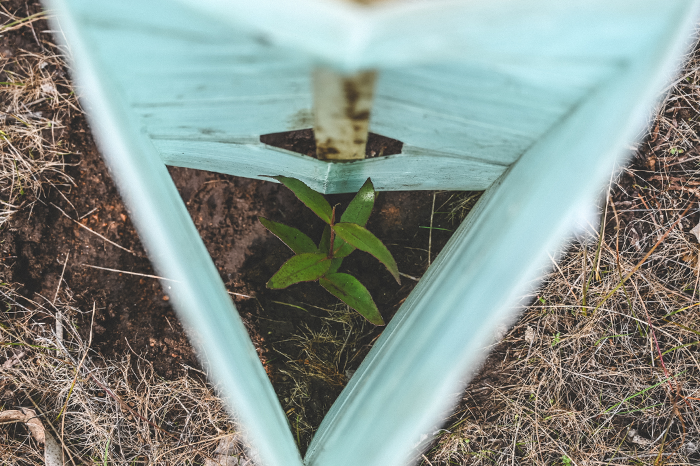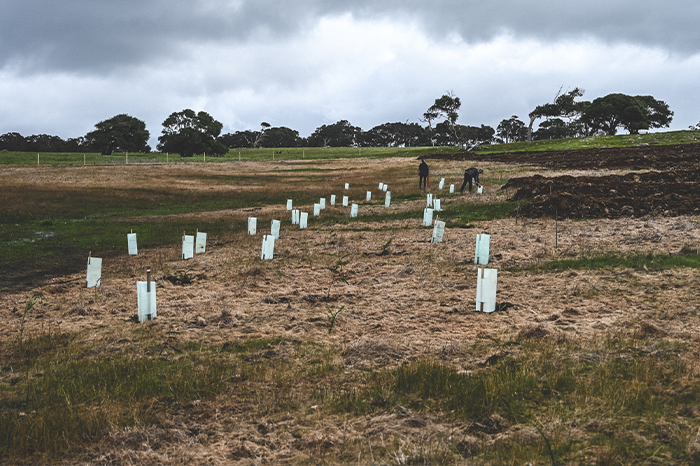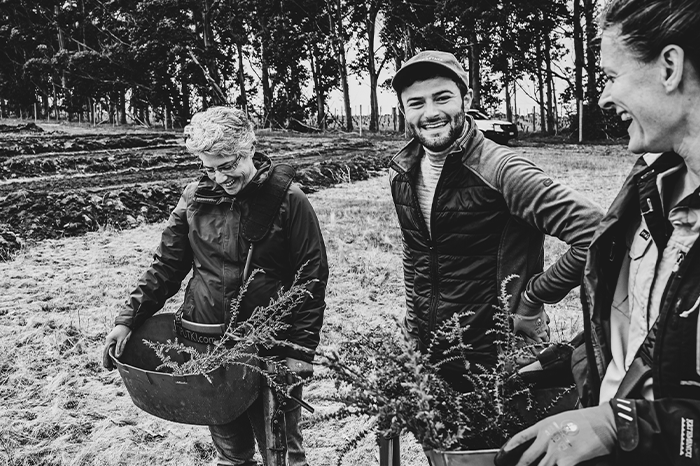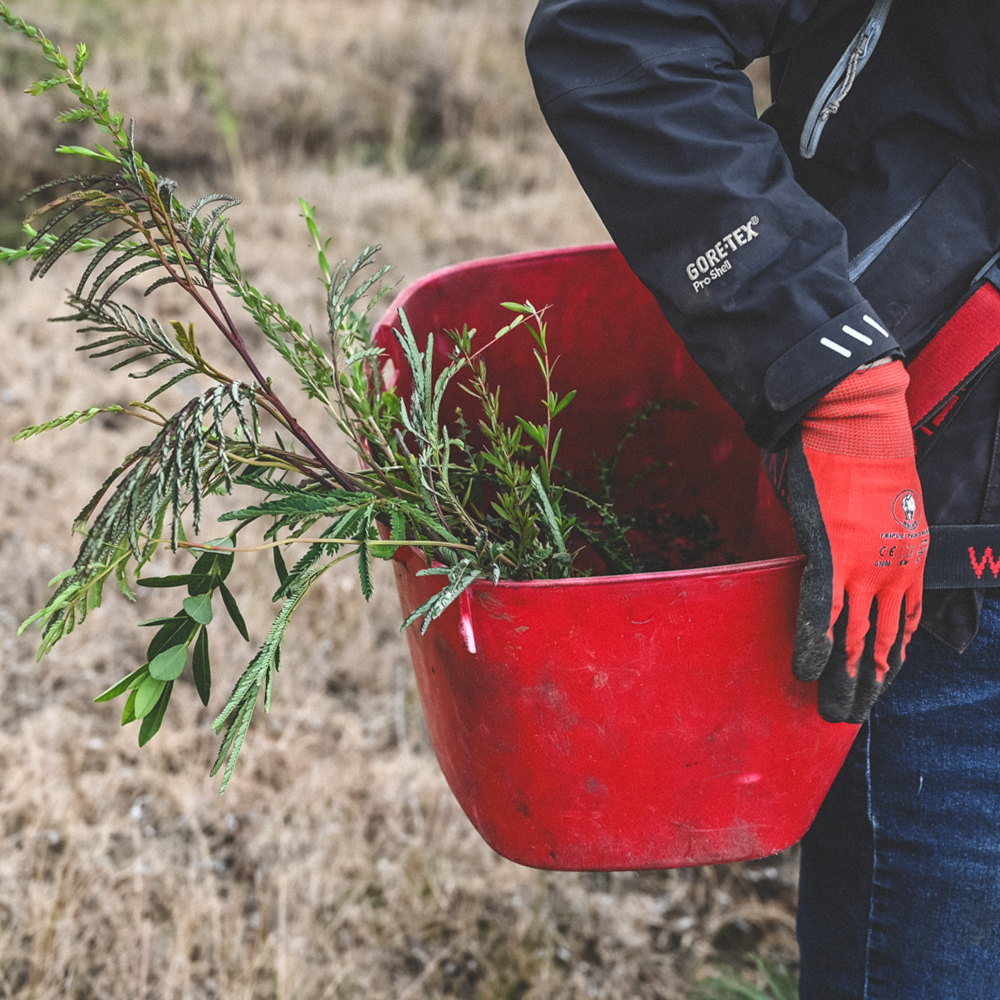A GREENER TOMORROW
Voyager Estate's Head of Sustainability, Michelle McManus, unveils a new revegetation project that will play a key part in reducing our net carbon emissions.
To address the challenges of climate change for the wine industry, we need a range of tools in the toolkit. The starting point is of course real and genuine emissions reductions from actions like using less electricity and fuel and reducing bottle weights, to name just a few.
Some reductions will take longer to achieve, so carbon storage or ‘drawdown’ is another tool in the transition to Net Zero emissions. For revegetation or reforestation projects, this is where carbon dioxide (a key greenhouse gas) is removed from the atmosphere and stored as carbon in branches, trunks and roots.
Last year, Voyager Estate was successful in joining a Federal Government initiative called the Carbon and Biodiversity Pilot Program. This was designed to support and incentivise farmers to plant more than just three or four tree species on their land to store carbon and to improve biodiversity. The program focuses on planting local and diverse trees and shrubs that provide habitat and other ecological benefits. It’s also a great example of how collective efforts can create positive change in our environment, as we are one of four projects in the South West region. The South West Natural Resource Management (NRM) group was a huge support in the early stages, assisting in understanding the regulations and preparing a revegetation plan.
This initiative forms a key part of our IWCA commitment to reduce our net carbon emissions. The whole process is carefully planned, audited and then monitored over time, and we create a ‘carbon credit’ equal to one tonne of carbon stored. This carbon credit is like a share that can be bought or sold in a regulated carbon market. More and more farmers are holding onto these verified credits to meet their own carbon neutral goals – which is exactly our goal at Voyager. So, storing carbon on your own land is a type of ‘internal carbon offset’.
Together with the Landsmith Home Farm team of James and Chris, Stuart Chugg jumped on the tools and we installed over 3.5 km of fencing using our own fence-post driver. We had some invaluable contractor assistance from Andy Hogarth and the team at Cape-to-Cape Fencing. Local earthworks company AMH Earthworks did a superb job in preparing the site for seeding, removing a small layer of vegetation but keeping topsoil intact.
Planting commenced on the 21ha site on 10th August 2023, and took two weeks to complete. We used direct seeding (which means exactly that – using seed that has been carefully mixed and is thrown out by hand over prepared ground) and planting small seedlings, something very familiar to Voyager folk! Direct seeding is a method that is not only economical, but also results in a more natural planting.
Several members of the Voyager Estate team spent a cool, breezy morning planting approximately 500 seedlings of seven different species on the site in a wetland zone. This included using a nifty tool called a ‘pottiputki’ to pop the seedling in the top and then spear it into the ground and release.
Overall, just over 13,000 seedlings were planted as part of our Cordi Carbon and Biodiversity Project! In addition, more than 32 kilos of 30 different species of seed was hand-sewn by our long-time revegetation partners Cape Life – a testament to the dedication of all involved. Species include a variety of Acacias, Bull Banksia, the beloved Marri, Jarrah, Blackbutt and Peppermint, and small shrubs and climbers including Hardenbergia (in flower now!). The project is estimated to store over 9,000 tonnes of carbon over 25 years.
It will take a few years and some nail-biting summers to come, but this initiative is poised to become a lasting and valuable addition to our land and the region's ecological connectivity and diversity.
Stay tuned for more updates as this green initiative continues to flourish and make its mark on the region. Our special patch of land in Margaret River, with its undulating beauty, is indeed a treasure we're fortunate to care for.
